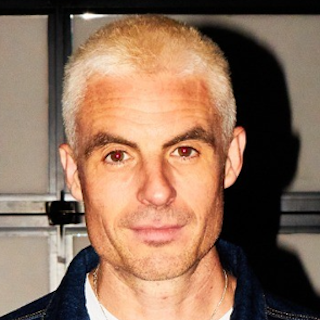As influencers replace journalists, a ‘jinfluencer’ is born
Here Be Dragons' Paul McEntee talks to a lot of journalists. They’re becoming more... TikToky - a trend driven by wider distribution challenges. He explains.

Brand owners - it’s 2025, your funnel doesn’t resemble a funnel any more, your media distribution plan only features vertical media, and everyone is banging on about ‘jinfluencers.’ What fresh hell is this?
Well, let’s take a tour.
A turf war is going on for the vestments of publishing right now, and ‘jinfluencers’ ( journalist + influencer) are at the heart of it.
Some context: the fragmented media landscape has increasingly served us up niche and nano interests, driving relevance away from the mainstream to less mass but more trusted sources, creating deeper engagement metrics with a more loyal and attentive audience that brands are at pains to seek out.
There will always be room in an established and progressive media society for differentiating media outlets. Rolling news v slow news, digital v the smell of ink, left v right wing views. Together, they create an authentically whole picture of the status quo to a degree. However, as legacy media grapples with new formats and audience consumption habits, an unlikely battleground has emerged between journalists and influencers.
UK publisher Reach - owner of the Daily Mirror, Daily Express, Manchester Evening News, and several local titles - became the poster child of this tussle when it announced 450 redundancies last year and planned to hire influencers instead of journalists.
Chief exec Jim Mullen told the Telegraph that “they don’t like me using the word influencers in here, but we have brought in people who have a following and… put them through our formal training to ensure they can write things in the right way”.
Advertisement
OK... so that sounds a lot like influencers then? While this is not great news for those affected by the redundancies, it’s actually quite a good business plan. If 20% of 18-24-year-olds use TikTok as their primary source for news, it makes sense to bring popular creators into the newsroom.
But where does this end? Can any micro or macro influencer be a journalist? And should they? Just because they have reach doesn’t mean they can present a balanced news story. Just because they have engagement doesn’t mean they engage in a decent interview (“What’s your favorite skincare regime?’).
With great power comes great responsibility, and once an influencer crosses the threshold to become a ‘jinfluencer,’ there are ethics involved, something trained journalists are pretty good at, being the conveyors of truth and all that - and influencers often lag in. So are traditional journalists at threat from ‘jinfluencers’ stealing their lunch? In short, yes.
Advertisement
While high-profile and specialist national and international reporters can sleep easy, formats are changing, and up-and-coming journalists now need to be equipped with a range of new skills that are socially native - presenting skills, video editing, community management and channel distribution, particularly for titles that profess to talk to a younger audience.
But, the opportunity is theirs for the taking. Their professional training puts them in a much better place to adopt these skills into their arsenal and create social-first growth opportunities for their content. It is much harder for established content creators to be governed by a new set of journalistic principles they didn’t previously adhere to.
So, it is up to journalists to serve their audiences correctly by delivering news content in the format required by new audiences. Understanding vertical media, bite-sized content that is easily digestible on the go, taking complex issues and drilling down into them to make them simple to understand - is the new paradigm. The OG of this from traditional media is Ros Atkins at the BBC, who spotted the trend for short-form video content early and delivered it at scale across social media and on primetime TV. Would-be jinfluencers can simply replicate this model.
Suggested newsletters for you
So, how do brands behave in this new distribution model?
-
Shun the press release. Consider breaking your news via a single, well-informed ‘jinfluencer’ instead of mass media. There is bravery in allowing someone else to own the narrative of your communications, and authenticity is the prize at stake.
-
Organic not paid. Don’t assume you can just pay a ‘jinfluencer’ to discuss your brand. You can’t. Create organic and paid social content that can sit next to each other but is distinctly different in feel, providing fresh perspectives on your brand/story.
-
Expand your remit with influencers. Look at influencers as another media space. How can you get creative with them? Can you bring them in earlier during your campaign planning rather than just amplification? They can be partners/ creatives/ investors, and more.
-
Think vertical. Don’t think you can’t bring the craft to something if it’s not 16:9. With TikTok trialing longer format content, including vertical documentaries up to an hour in length, this upright media is experiencing huge creative investment.
Who are the ‘jinfluencers’?
Here are five that matter:
-
Sophia Smith Galer: The former BBC and Vice reporter who now does most of her journalism on women’s rights and global affairs through her 511,000-strong TikTok.
-
Go Fund Yourself: A Gen Z-skewing Instagram account run by Alice Tapper boasts almost 100,000 followers and specializes in financial advice and honest conversations about money.
-
Joy A: A 24-year-old presenter from London who covers entertainment but also looks at issues surrounding youth and debunks them for her audience. 18,000 followers on IG and growing.
-
Saskia Marriot: The lead TikTok presenter for the platform and freelance entertainment journalist covering youth culture. 19,000 followers on IG and growing.
-
Monika Plaha: The BBC reporter has just over 83,000 followers on TikTok, where she posts behind-the-scenes videos, South Asian stories, and news roundups.

